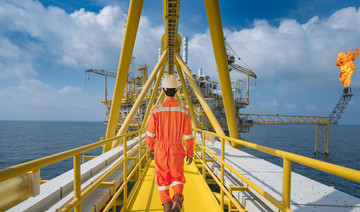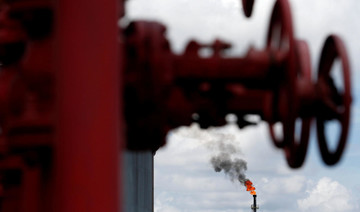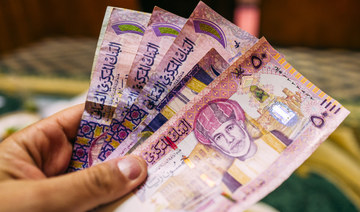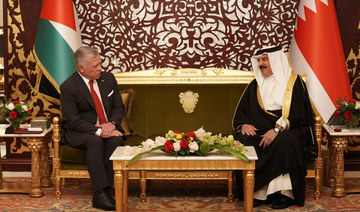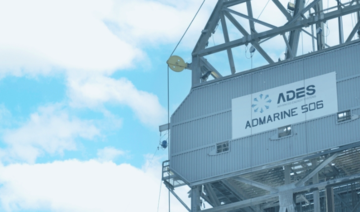PARIS: Global oil supplies could be hit by the decision by the US to pull out of the Iran nuclear deal, and also by falling production in crisis-hit Venezuela, the IEA said on Wednesday.
The decision by US President Donald Trump to withdraw from the Iran deal “has switched the focus of oil market analysis from the fundamentals to geopolitics,” the International Energy Agency wrote in its regular monthly report.
On May 8, Trump announced he would pull the US out of a 2015 pact — agreed by Britain, China, Germany, Russia and the Barack Obama administration — that opened up Tehran’s atomic program in return for an easing of sanctions.
Oil prices — which had already rising on the back of steady demand growth and a landmark deal by oil producing countries, both inside and outside OPEC, to lower output — have since surged above $77 per barrel, the IEA said.
“In these early days, there is understandable uncertainty about (the) potential impact on Iran’s oil exports” from the US move, it said.
When sanctions were imposed in 2012, Iranian exports fell by about 1.2 million barrels per day, the organization said.
“It is too soon to say what will happen this time, but we should examine whether other producers could step in to ensure an orderly flow of oil to the market and offset a disruption to Iranian exports.”
Shortly after the US announcement, Saudi Arabia, the OPEC kingpin, acknowledged the need to work with producers and consumers to mitigate possible supply shortfalls, the IEA noted.
Another possible risk to the global oil supply could come from crisis-hit Venezuela, the IEA said.
“In Venezuela, the pace of decline of oil production is accelerating and by the end of this year output could have fallen by several hundred thousand barrels a day,” the IEA said.
“The potential double supply shortfall represented by Iran and Venezuela could present a major challenge for producers to fend off sharp price rises and fill the gap, not just in terms of the number of barrels but also in terms of oil quality,” it said.
The IEA said that the overall market balance was “continuing to tighten,” and it lowered its estimate for 2018 global oil demand growth to 1.4 million barrels per day from its previous estimate of 1.5 million.
“Demand at the start of the year was supported by cold weather in Europe and the US, the start-up of new petrochemical capacity in the US and a solid economic background,” the IEA said.
“While the economic environment will continue to support oil demand... support from harsh weather conditions will vanish and the recent jump in oil prices will take its toll,” it said.
“Therefore, world oil demand growth is expected to slow” in the second half of the year.
Iran and Venezuela weighing on oil market, energy watchdog says
Iran and Venezuela weighing on oil market, energy watchdog says
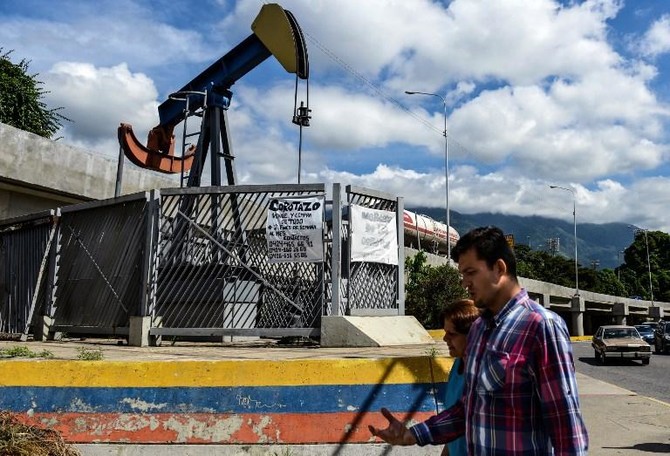
SME financing in Saudi Arabia surges 20.4% in Q4
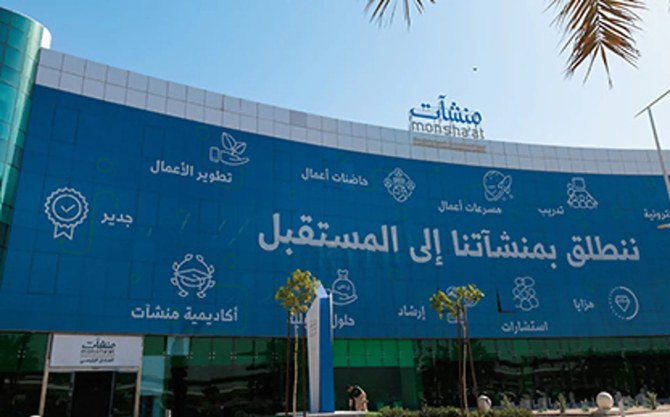
RIYADH: Financing provided to small and medium enterprises in Saudi Arabia surged by 20.4 percent year on year to $73.5 billion in the fourth quarter of 2023, official data showed.
In its latest quarterly report, the Kingdom’s Small and Medium Enterprises General Authority said that credit facilities provided to micro and SMEs amounted to $6.7 billion and $24.6 billion, respectively, in the last three months of 2023.
On the other hand, medium enterprises in the Kingdom secured finance worth $42.2 billion in the last quarter of the previous year.
The authority, also known as Monsha’at revealed that banks in Saudi Arabia provided credit facilities worth $68.9 billion in the fourth quarter of 2023, representing a rise of 21.1 percent compared to the same period of the previous year.
On the other hand, finance companies in the Kingdom provided loans amounting to $4.6 billion in the last three months of 2023, marking a year-on-year rise of 9.3 percent.
Developing the SME sector is crucial for Saudi Arabia as the Kingdom is currently on a path of economic diversification, as it steadily reduces its dependency on oil.
The report revealed that 9,644 SMEs were benefitted from Monsha’at support centers in the first quarter of this year.
Moreover, three SMEs had their initial public offering on the parallel market Nomu through the Tomoh program in the first quarter of 2024.
Monsha’at also revealed that Saudi Arabia led venture capital funding in the Middle East and North Africa region with $240 million deployed across 35 deals in the first quarter of this year.
“With $240 million deployed across 35 deals to Saudi-based companies, the Kingdom accounted for a remarkable 65 percent of all VC funding in the region,” said the authority.
The report attributed 54 percent of this VC funding to the $130 million pre-initial public offering secured by Salla in March.
“While the $240 million invested in the first quarter maintains the Kingdom’s dominance, it did reflect a considerable quarterly drop of 70 percent from the fourth quarter of 2023, along with a 42 percent year-on-year drop. This downturn mirrors the broader trend across the MENA landscape,” said Philip Bahoshy, founder and CEO of venture capital data platform MAGNiTT.
He added: “Digging deeper, it becomes evident that while the overall funding has diminished, the Kingdom’s entrepreneurial ecosystem continues to attract investors.”
Oman’s banking sector sees 2.9% rise in credit to $80bn by end of March
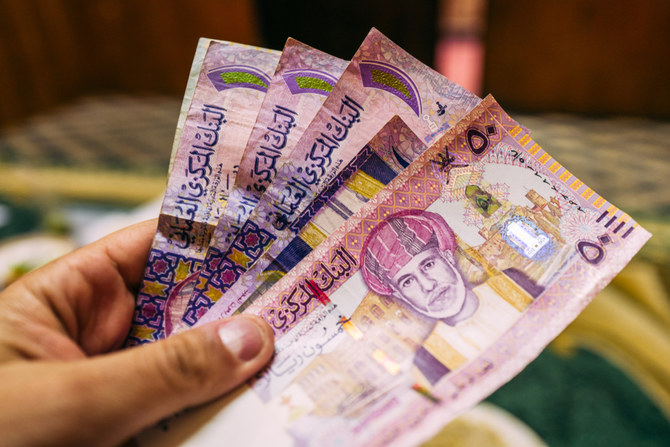
RIYADH: Oman’s banking sector experienced a 2.9 percent rise in total credit, reaching 30.8 billion Omani rials ($80 billion) by the end of March, official data showed.
In its monthly review of banking and monetary developments, the Central Bank of Oman disclosed that credit to the private sector rose by 3.6 percent year-on-year, reaching 25.9 billion rials by the end of March.
Non-financial corporations held the largest share of the total private sector credit, accounting for approximately 45.4 percent by the end of March, followed closely by households at 45 percent.
Financial corporations constituted 5.8 percent of the total, while the remaining 3.8 percent was allocated to other sectors.
Total deposits held with other depository corporations witnessed a significant year-on-year growth of 11.7 percent, reaching 30.3 billion rials at the end of March, while total private sector deposits grew by 13.7 percent to 20.2 billion rials.
The increase in private sector credit and deposits reflects robust economic activity and confidence in the financial system.
Regarding the sector-wise composition of private sector deposits, household holdings contributed the most at 49.8 percent, followed by non-financial corporations at 30.9 percent, financial corporations at 16.5 percent, and other sectors at 2.8 percent.
The combined balance sheet of conventional banks showed a year-on-year growth of 0.8 percent in total outstanding credit as of the end of March.
Credit to the private sector increased by 1.6 percent, reaching 20.3 billion rials, while overall investments in securities surged by 28.0 percent to 5.7 billion rials.
Investment in government development bonds decreased by 17.1 percent to 1.8 billion rials, while investments in foreign securities saw a dramatic increase of 139.0 percent to 2.3 billion rials.
Moreover, aggregate deposits in conventional banks experienced significant growth, while government deposits declined. Public enterprise holdings increased substantially, and private sector deposits rose.
Simultaneously, Islamic banks and windows witnessed notable growth in total assets, financing, and deposits, underscoring their expanding role within the banking system.
The report further highlighted that the nation’s nominal gross domestic product declined by 2.8 percent at the end of the fourth quarter of 2023, primarily due to a significant drop in the hydrocarbon sector despite growth in the non-hydrocarbon sector.
However, real GDP increased by 1.3 percent during the same period. Both the average oil price and daily production saw decreases, while inflation remained minimal.
Saudi fashion industry projected to expand by 48% by 2025

RIYADH: Saudi Arabia’s fashion industry is set to post a cumulative annual growth of 48 percent from 2021 to 2025 as the Kingdom diversifies its economy, a report said.
In its latest quarterly release, the Small and Medium Enterprises General Authority said that Saudi Arabia’s Fashion Commission is playing a crucial role in building a more robust ecosystem to propel the sector’s growth.
The authority, also known as Monsha’at, revealed that the fashion industry contributed 1.4 percent of the Kingdom’s gross domestic product in 2022.
The report added that the total value of the fashion sector in Saudi Arabia, including international brands, stood at $24.6 billion in 2022.
On the other hand, the domestic fashion industry in the Kingdom was worth $12.5 billion in 2022.
“Saudi Arabia has embarked on a profound transformation across multiple industries. This renaissance spans architecture, music, film, art, food, and more. Through diverse initiatives at the Fashion Commission, we are revolutionizing the fashion sector and elevating our talents to global stages while adhering to the core pillars that drive growth and sustainability,” said Burak Cakmak, CEO of the Fashion Commission.
He added: “Due to several strategic initiatives that fostered a dynamic ecosystem of creativity and business acumen, the growth of the fashion industry in Saudi Arabia over the past few years has been unprecedented.”
Cakmak said that developing local talent in the Kingdom is one of the crucial missions of the Fashion Commission.
He added that the organization has initiated comprehensive educational programs, workshops, and mentorship opportunities to develop the growth of Saudi nationals in the sector.
The official also noted that the commission assists small and medium enterprises operating in the sector in growing and expanding their businesses.
“We also advance the industry by providing essential support to entrepreneurs and SMEs, offering assistance and resources that help businesses scale. Regulatory frameworks are established and enforced to ensure ethical practices and sustainability, while cultural preservation initiatives highlight Saudi heritage, promoting it both locally and globally,” said Cakmark.
The Monsha’at report added that the fashion industry in Saudi Arabia has employed over 230,000 people as of 2022, and 52 percent of the workforce is female.
The authority revealed that the women’s apparel market in the Kingdom will witness a 20 percent growth by 2027, while the men’s market is set to expand by 27 percent during the same period.
Cakmak added that participation in international fashion events by Saudi companies will help affirm the place of the Kingdom in the global arena.
“Market expansion efforts, including marketing campaigns and participation in international fashion events, further enhance the visibility and competitiveness of Saudi fashion brands. All of these are core strategic pillars that effectively nurture a vibrant, dynamic, and globally competitive fashion industry in the Kingdom,” Cakmak noted.
He concluded: “We believe that the future of Saudi fashion lies in the hands of our talented designers and visionary entrepreneurs. As we continue to support and nurture these individuals, we are confident that the Kingdom’s fashion industry will continue to flourish.”
S&P reaffirms Bahrain’s credit rating amid fiscal challenges; outlook stable
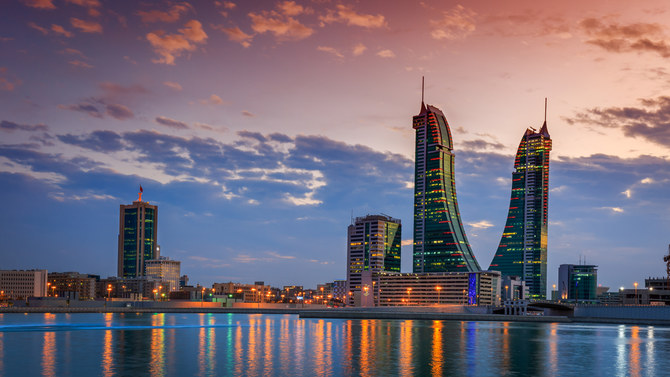
RIYADH: Bahrain’s commitment to fiscal consolidation has witnessed S&P Global Ratings reaffirm its “B+/B” credit standing with a stable outlook despite challenges in 2023.
However, the agency added that the transfer and convertibility assessment on the Gulf state remains “BB-.” It also anticipated structural reforms aimed at strengthening the non-oil revenue base, albeit at a slower pace.
In its report, S&P said that the stable outlook reflects the expectation that Bahrain will persist in implementing measures to reduce its budget deficit, possibly benefiting from additional support from other Gulf Cooperation Council sovereigns if necessary.
Conversely, the ratings could improve if Bahrain’s fiscal situation exceeds expectations, leading to a reduction in net debt relative to gross domestic product, or if current account surpluses widen, bolstering the country’s external position, according to the study.
However, potential downside risks include a significant increase in government debt or a sharp decline in foreign currency reserves, which could hinder debt servicing and monetary policy effectiveness.
“We could lower the ratings if the government’s net debt and debt-servicing burden increased significantly beyond our assumptions, presenting funding challenges. We could also take a negative rating action if foreign currency reserves declined sharply, limiting the government’s ability to service its external debt and weighing on monetary policy effectiveness,” the report said.
On the other hand, the rating agency outlined an optimistic scenario for Bahrain, stating that it might upgrade the country’s standing if the government surpasses expectations by substantially reducing net debt relative to GDP through improved budgetary performance.
Additionally, the ratings could increase if the current account surpluses are expanded significantly and consistently enhance the island state’s external position.
The agency noted that its assessment is based on the anticipation that the Bahraini government will fortify its financial stance up to 2027, notwithstanding the considerable deficit expansion in 2023.
It added that the shortfall experienced last year was primarily influenced by elevated interest rates, a one-off lump sum social support program, and an upward adjustment in pensioners’ inflationary allowance that will continue into 2024.
Considering this initial setback, S&P foresees broader fiscal deficits averaging 4.4 percent of GDP from 2024 to 2027, compared to 3.8 percent in its prior evaluation.
“A decline in oil production due to ongoing maintenance at the Abu Safa oil field also affects our revenue assumptions. However, we believe the government will continue pursuing fiscal and structural reforms to strengthen its non-oil revenue base, allowing for continued, albeit slower, fiscal consolidation over our forecast horizon to 2027,” the agency said in its report.
Moreover, S&P assumed that Bahrain would receive the remaining $2.8 billion of the $10.2 billion GCC support package pledged by Saudi Arabia, the UAE, and Kuwait in 2018, and there remains potential for additional financial support beyond the program’s expiration at year-end 2024 if needed.
“These interest-free loans have historically covered about 50 percent of the government’s gross external financing needs, although we note disbursements are not tied to, and do not necessarily align with, Bahrain’s external debt repayments,” the agency said.
It further highlighted that Bahrain encounters annual external debt redemptions ranging from $2.0 billion to $2.5 billion, equivalent to 5 percent of GDP, stemming from a mix of Eurobond and sukuk issuances.
In February, S&P explained that Bahrain successfully raised $2 billion by issuing a seven-year, $1 billion sukuk at 6.0 percent and a 12-year, $1 billion conventional bond at 7.5 percent.
“We understand the issuance was met by strong investor demand, supporting more favorable pricing dynamics. In our base-case, we assume Bahrain will maintain strong access to international capital market funding,” it added.
It explained that the country’s relatively diverse economy, proximity to Saudi Arabia’s market, robust financial sector oversight, and educated workforce provide a foundation for resilience. However, stagnant GDP per capita levels, adjusted for population growth, suggest underlying challenges in achieving broad-based economic prosperity.
“However, when GDP performance from 2017-2027 is adjusted for population levels, GDP per capita levels are largely flat, suggesting that labor supply, rather than productivity, remains the key growth spur. We view Bahrain as having a relatively wealthy economy and estimate GDP per capita at $27,58 in 2024,” it said.
Saudi drilling firm ADES secures 6 onshore contracts at $645.3m in Kuwait
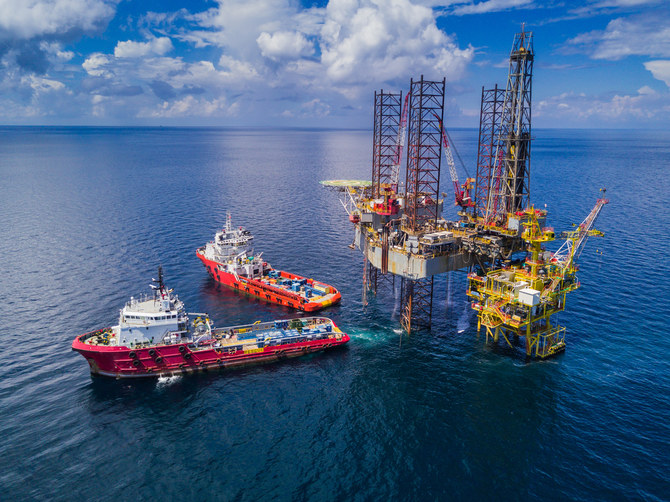
RIYADH: Saudi exploration service provider ADES Holding Co. has secured a SR2.42 billion ($645.3 million) deal for six onshore drilling contracts with Kuwait Oil Co., marking an expansion of its operations.
ADES specified that the award includes new agreements for four existing operating rigs in Kuwait and two newly constructed units, according to a release to Tadawul.
The contracts are slated to commence in the second and third quarters of 2025, with a firm five-year duration and an optional one-year extension.
Mohamed Farouk, CEO of ADES Holding, said: “Securing such long-term contracts not only adds to the sustainability of our backlog and visibility of our business but is also a testament to ADES’ exceptional safety and operational performance, which will see us triple the size of our contracted fleet in Kuwait from four to 12 rigs upon deployment in 2025.”
He added: “With these new awards, ADES has further solidified its position in the niche Kuwaiti onshore market, characterized by high barriers to entry and deep drilling deployments where ADES has consistently proven its abilities.”
All six contracts are designated for deep drilling rigs in the 3,000-horsepower category, a niche market segment experiencing notable growth in Kuwait.
The estimated backlog for these contracts stands at SR2.42 billion, encompassing both the firm and optional periods.
In just 24 months, the company has seen a three-fold increase in its contracted fleet with Kuwait Oil Co.
This growth trajectory is particularly striking, rising from four rigs in early 2023 to an anticipated 12 rigs by 2025.
ADES operates 10 onshore rigs with KOC in Kuwait, emphasizing the company’s strengthened presence and strategic alignment with Kuwait’s energy sector objectives.
In May, ADES expanded its regional footprint by sealing two contracts worth SR511 million, highlighting its growing influence in the oil and gas sector.
The company signed a deal with TotalEnergies to operate an offshore drilling platform in Qatar valued at up to SR350 million. The agreement includes a mandatory one-year period with an option to extend it for up to an additional 18 months, according to a bourse filing.
Operations are slated to begin in the second half of 2024. The company emphasized that no related parties were involved in this agreement.
Moreover, ADES announced in a separate release that it was awarded a 21-month contract to employ an elevated platform in the Gulf of Suez. The company received a direct award letter from the Suez Oil Co, also known as SUCO, in Egypt, with operations expected to commence in the coming weeks. In a statement on Tadawul, the company disclosed that the deal is valued at SR161 million.
This new engagement in Egypt is part of ADES’s broader regional strategy to reactivate its operations. It follows recent contracts in Thailand and Qatar, bringing the total number of reactivated platforms to three of the five recently suspended in Saudi Arabia.


